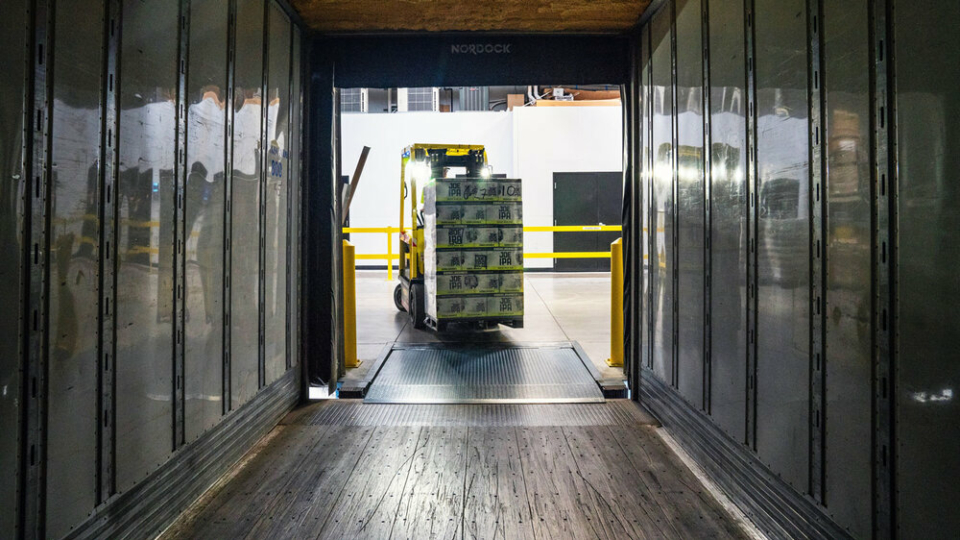Story by
Ben Brough
Tags /
- Cargo Theft
- Freight Protection
- Risk
- Security
- Supply Chain
Over the last two years, it’s been startling to see the reports of cargo theft skyrocketing across the US, as well as the rise in new types of fraudulent activity, like the sudden surge in double brokering. Meanwhile, across the Atlantic, Europe has been experiencing a staggering spike of its own, with the number of reported incidents in the EMEA region rising by almost 700% in 2023. And yet, the intricacies of the European supply chain mean that the types of — and trends in — cargo crime on the continent look a little different to those seen most often in the States.
Keep reading as I unpack the most significant cargo crime trends currently impacting the EU, and touch on how to create a robust loss prevention strategy.
1. On the rise: a sharp increase in loss value.
As well as the number of thefts increasing, so too has the value of the loss caused by these incidents. According to figures from TAPA, the average loss almost doubled in value between 2022 and 2023, going from €107,957 to €206,665, with the estimated cumulative toll on Europe reaching a whopping €8.2bn per year.
Even in the rare regions where cargo crime is decreasing, the losses are becoming more severe. The Netherlands reported an unprecedented drop in thefts in the last year, with the number diminishing from 727 in 2022 to 162 in 2023. While this reduction could be partially down to a considerable reduction in port and airport traffic, or the introduction of new, tighter security measures at Schipol — neither of these factors explains why the value of each individual loss has more than tripled.
2. Hot commodities: food and beverage takes the spotlight.
It seems that cargo criminals are intentionally targeting high-value loads, but what constitutes “high value” has also shifted, as supply chain disruption has caused a number of surprising products to leap in price. For instance, Spain produces 40% of the world’s olive oil, but in 2023 it had a diminished olive harvest due to extreme weather. This shortage resulted in a sudden scarcity that caused prices to rise by 50% — making it a shipment well worth targeting. In August that year, 56 tonnes of extra virgin olive oil were stolen from a warehouse in Cordoba; a theft valued at over half a million USD (incidentally, this loss would likely have been covered by Loadsure’s stock throughput insurance, Huron™, had a policy been taken out).
Olive oil is just one example, but inflation has actually caused a steady increase in the targeting of food and beverage freight across the EMEA region since 2022. These cargo thefts accounted for 21% of all reported incidents in 2023, with Germany and Italy being among the European countries most affected.
3. Europe: the home of “slash and grab” cargo theft.
The methods of cargo theft experienced in Europe are also remarkably different. For instance, slash and grab cargo thefts seem to happen almost exclusively on the continent, although they only make up 3% of the reported thefts in 2023. There are a few different explanations for this, but perhaps the most obvious is the European proclivity to use soft-sided trailers for road freight, which are much easier to cut through.
“Curtainsiders” like this remain popular in Europe because they allow for side loading — making it easier to load or unload cargo in a smaller or unusually laid out space — but they’re largely unnecessary in the US, where delivery destinations are far more likely to have a purpose-built loading dock.
4. Sitting targets: thefts from facilities continue.
The latest annual report from TT Club indicates that theft from static storage locations like warehouses or other freight facilities was the most common type of European cargo theft in 2022, and retained this status in 2023 too.
As well as the obvious financial impact on the owners of the goods, there are secondary effects like the damage done to the facility. Similarly, other less valuable freight might incur damage as an indirect result (for instance, if power is cut to enable a break-in at a cold storage warehouse). There can even be a risk to life if out-of-hours staff are on site at the time of the theft; all this makes the continued prevalence of theft from facilities particularly harmful.

Avoidable losses can decimate European businesses — but the right loss prevention strategy will minimise the impact of cargo crime.
While some losses are inevitable, it’s possible to reduce the likelihood of cargo crime and diminish its impact with a robust loss prevention strategy. For freight businesses, that could mean ensuring cargo integrity practices are followed, investing in tracking technology, or doing due diligence on your drivers and carriers.
Crucially, incorporating the concept of Holistic Freight Protection into your loss prevention strategy can be transformative. Conceived by Loadsure, this is an approach that combines proactive risk management insights with accurately-priced cargo insurance products. This not only empowers businesses to make data-driven decisions that minimise risk, but also reliably access affordable cargo cover — and should the worst happen, our automated claims processes ensure you’re made whole again as soon as possible.
To find out more about Holistic Freight Protection, or our cargo insurance products, don’t hesitate to get in touch by filling the below form.
